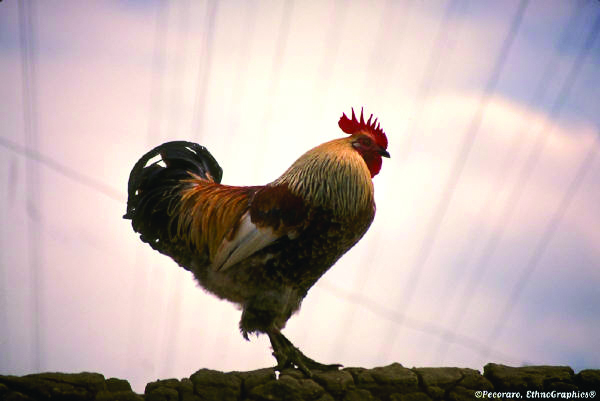Gardening Essentials for Essential Gardening
By Sydney Andrews.
The world, as we know it, has changed drastically in mere hours. TV’s, phones, newspapers, and people are constantly displaying information about the world’s pandemic: COVID-19. Feelings of worry, uncertainty, grief, and restlessness are readily available emotions that people are carrying with them these days. With shelter in place statutes, daily life means the only reason you can justify leaving the house, is for essentials.
In spite of all this which seems so bleak, and with a extra time at home with family, here’s a challenge for you. Get outside, share a conversation with your quarantine buddy (6 ft away of course), maybe cross off the eyesore that’s been on that one list forever. For our household, that one thing on that one list is to revitalize our garden! Think about it; there’s no better time than now! When a trip to the grocery store has become a dilemma of personal health and safety, it’s time to pull the weeds and grow your food. It’s rewarding, it’s something to do with all this extra time, and in a time like this, it’s ESSENTIAL.
Whether you just need to give your garden some TLC, or if you’ll be starting from scratch, we have come up with 5 steps to ensure that your garden is ready to churn out some tasty essentials all summer long.
Step 1: Fix up or build raised beds.
For those of us who left the garden untouched for the entire winter, we might have some rebuilding and reinforcing to do. Ensure that there are no holes or rotting wood in the frames. You may need to replace a few boards, or maybe even start from scratch. Be sure you put chicken wire at the bottom of your beds so that gophers or any other critters don’t dig into your beds from the bottom. You can also set a mesh lining on top of the wire as another layer of protection. Depending on where you live, think about the reinforcements you will need to keep the pests away. Bunnies, deer, gophers, and birds will have no problem eating the fruits of your labor! This reinforcement might look like cages around your raised beds, a fence around your garden will protect the fruits and vegetables you labored over. For those of you who are starting from scratch, now is the time to figure out how big you want your garden to be. Get the whole family involved and build the beds together! Start small! A small garden that’s well taken care of will produce far more than a more extensive unmanageable garden. You may be asking yourself how you can get all of the materials needed to build – places like Home Depot and Tractor Supply all have options to order online and pick up on-site. This option allows you to be socially responsible and stop the spread by limiting the number of people you come into contact with.
Step 2: Prepare the Soil
Let’s talk about soil! Without good soil, your plants cannot grow to their full potential. It’s important that your soil is loose, has good drainage, and maintains a healthy pH balance. For those of you with existing gardens, it’s time to pull those weeds! When you pull weeds, be sure to remove them from the base of the plant where it comes out of the dirt to ensure the roots come out with it. For those of you who are starting from scratch, buy soil and compost. If you already have compost, this is a great time to use it. Eggshells are also great, especially as a seed starter. Mix it in with your soil to give the soil the nutrients it needs to support healthy plants. There are kits you can buy to check the pH of your soil. Check your nearest garden store for the operating hours as they may have changed. Again, many places are offering online orders for pick up.
Step 3: Plant your seedlings
Now that your garden is ready, it’s time to make miracles happen! Our favorite part, choosing plants and watching them grow into the essential-ness that they are. Think about the things you and your family like to eat, and eat a lot. Planting is also a great way to educate your kids who are home from school, an excuse for them to get outside, get a little dirty, and have some fun! For those of you first starting – tomatoes, peppers, and onions are great plants to start with as they are pretty hardy and hands-off. Other things you can plant for summer are cucumbers, garlic, potatoes, corn, watermelon, squash, beans, and strawberries. You will also need to think about how much you will need to grow to feed your family for the summer. Note that some plants produce throughout the entire summer. Some are only harvested once and will need to be planting again. For those plants that produce once, you can start more seedlings after the first seeds have sown into the ground. Pay attention to the information on the back of the seed packets as it will tell you when to plant based on where you live, how to plant them, and how long it takes for them to germinate or sprout. You can buy seed starter cups, or you can use our budget-friendly method and use egg cartons to start your seeds. Use your finger to make a hole, put a few seeds into each hole and cover lightly. Make sure you keep the soil moist, cover with a store-bought container, in your shed/home, or with a few plastic bags. It’s important to keep the plants warm while they are starting to grow. You can do this with artificial light or by ensuring that they are in a sunny place. A few sprouts will come up – cut away the weaker ones leaving the strongest looking seedling, so they are not competing for water and nutrients.
Step 4: Transplant
Once your seedlings have grown strong, it’s time to get them used to the outdoors. Look at the back of your seed packets to know when it’s time to sow them into the ground. It’s finally time to put them into your raised beds! Dig a hole with your hands, and put your plants inside. Make sure to keep in mind the distance requirements on the back of your packets. Once your plants are in the ground, all you need to do is to make sure they get adequate water throughout the spring/summer. Your plants will need at least an inch of water per week. When it is really hot, the soil dries out quickly, so be sure to account for the temperature in your area. You can achieve this by installing a drip system for a more hands-free approach, or by taking the time to sufficiently water and nourish your garden. Adding a layer of mulch as the top layer of your bed can help with drainage, keep the roots cool, and slow the process of water evaporating from your soil. Other than that, give your plants some love, maybe say a few encouraging words as they work hard to grow and feed your family!
Step 5: Harvest & Enjoy
You and your family have been diligently caring for your garden. And your garden has continued to work hard for you! All that work has finally paid off, and your worries can rest easy as you have food for your family to enjoy. For the plants that continue to produce through the summer, it is essential to pick when ready so that it has room and space to keep providing. For those plants that are one time harvested, you can reap the rewards and plant again from the other seedlings you started. If your garden is producing more than you can eat, this is an excellent opportunity to learn about canning vegetables with your family. It’s a fun project that allows no food to go to waste and for the learning to continue!
While the garden continues flourishing, take this time to share a meal with your family. Or quarantine buddies and take in all that there is to be thankful for. You have food to eat, and people to share it with. Your kids have learned something new and had a little fun spending time with the family. Hopefully, you are feeling proud of what you accomplished. In a time that is so uncertain, you have the opportunity to create something that is certain to keep providing. We must keep working together to create something positive to share with those around us, and there’s no better way to do that than with growing something essential, food.







